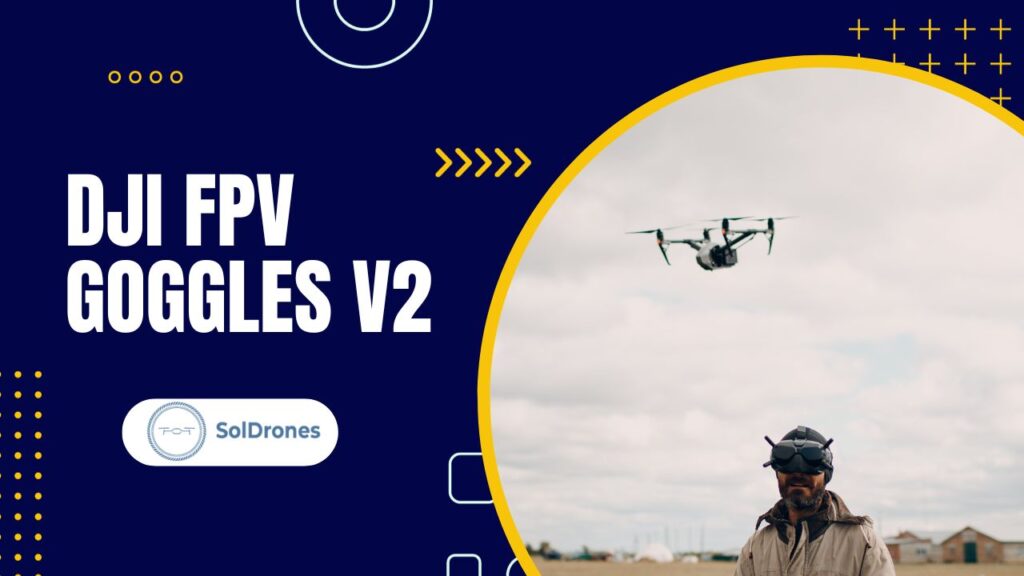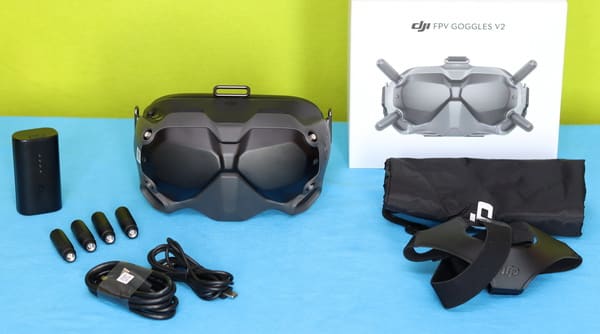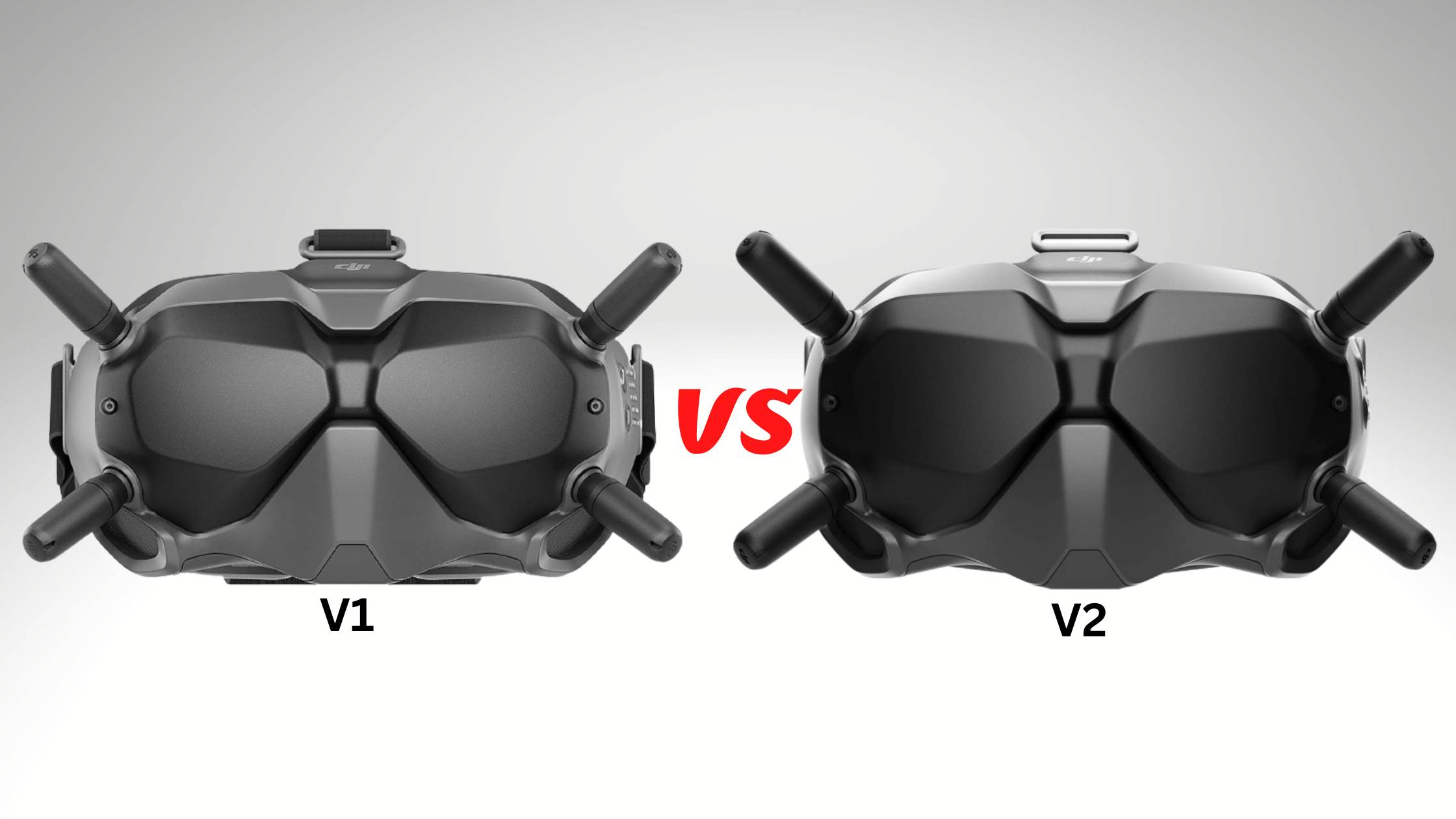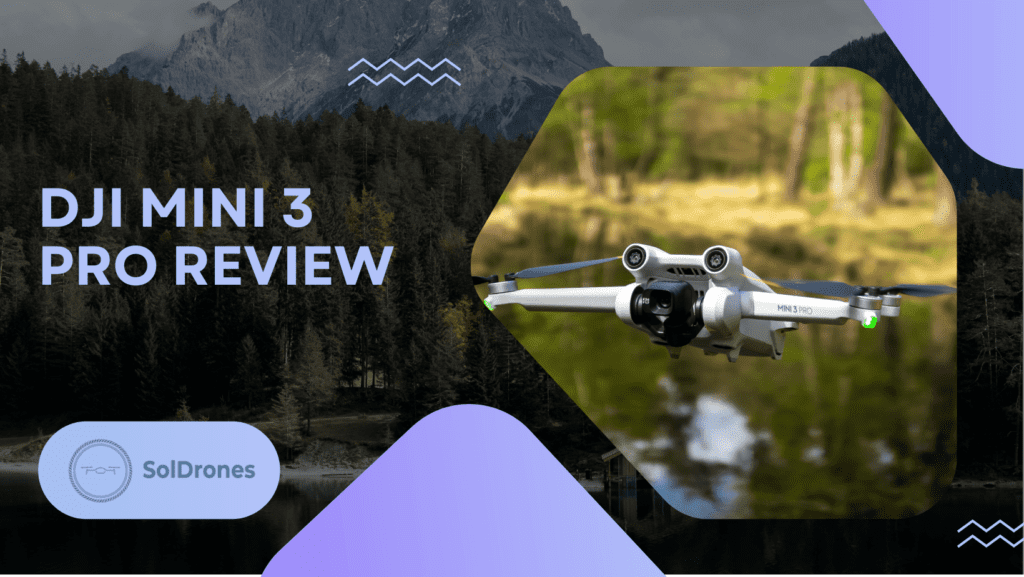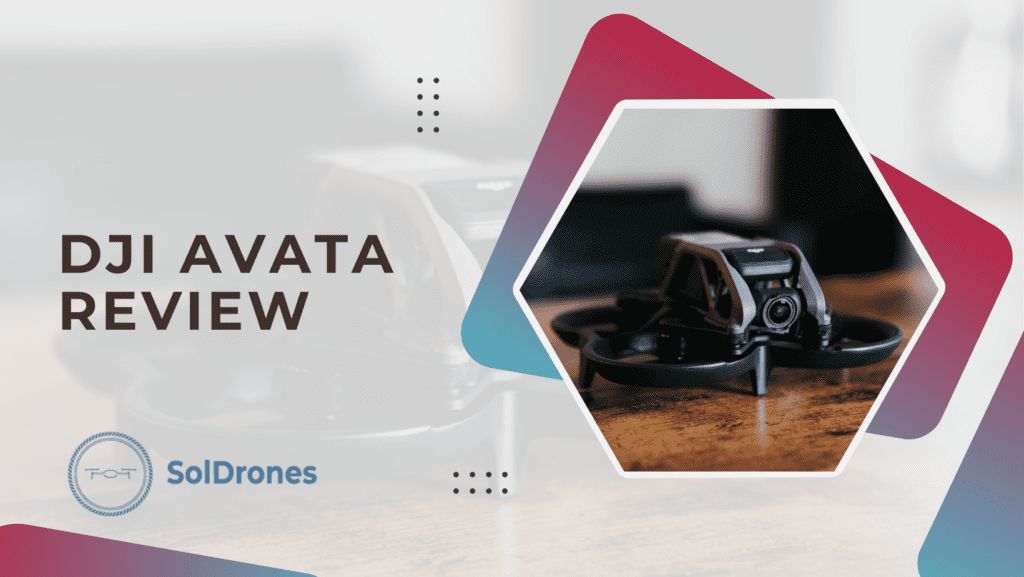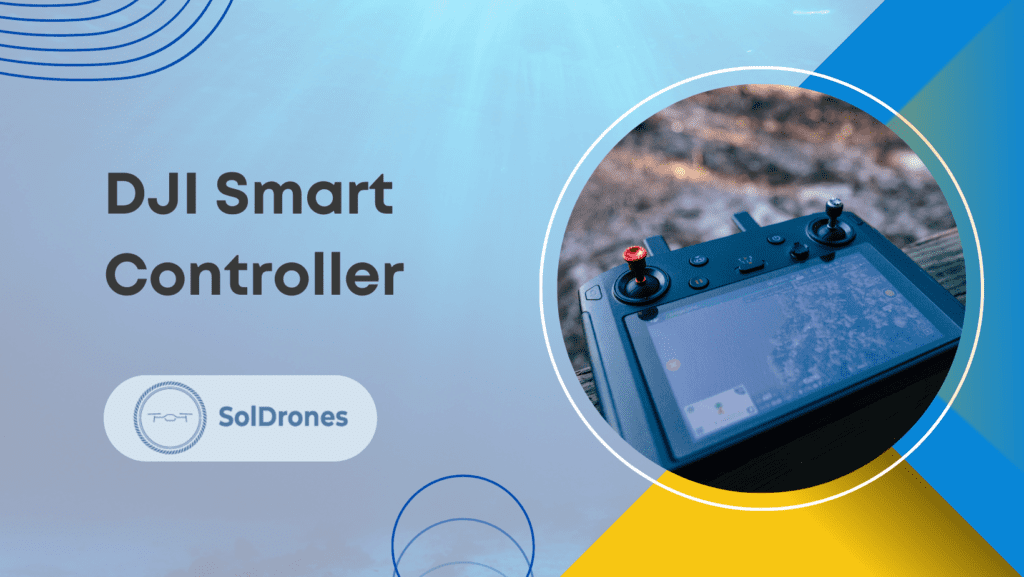The kit you use matters a lot when flying drones with a first-person view (FPV). DJI has made a big name for itself in the world of drones, and its DJI FPV Goggles V2 shows just why.
In this full review, we’ll dive into what these goggles bring to the table, from their tech bits to how they fit and feel. We’ll compare them to their first model and see how they stack up against cheaper analog FPV kits. Based on our research, we’ll also discuss the top-notch mode and various video format types you can get with the DJI digital FPV setup.
Knowing the ins and outs of these goggles will help you decide if they’re the right pick for your drone flights.
Product Spec & Features
Right from the start, when you open the box, you know the DJI FPV Goggles V2 are made for serious flying. They tip the scales at just 420 grams and measure up at 202×126×110 mm, so they fit nice and snug, all while giving you a great view.
What stands out the most are the two 2-inch screens inside, each showing images in 1440 × 810 high definition, so you see things very clearly. This HD image quality helps you fly and get amazing shots with ease.
These goggles operate with two bands: 2.4 GHz and 5.8 GHz. This means they send clear and strong video transmission, no matter where you fly or how fast you go. You can race fast or fly slow, and these goggles will give you live video with very little delay.
They have a Low-Latency Mode (810p/120fps ≤ 28ms) and a High-Quality Mode (810p/60fps ≤ 40ms). This fast feedback is key for flying with precision and making quick maneuvers.
Features
- Weight and Dimensions – 420 grams; 202×126×110 mm
- Screen Size and Resolution – Dual 2-inch screens, 1440 × 810
- Dual-Band Transmission – 2.4 GHz and 5.8 GHz frequencies
- Low Latency Modes – 28 ms in Low-Latency Mode, 40 ms in High-Quality Mode
- Compatibility – Seamlessly integrates with DJI FPV remote controller, DJI digital FPV system, and DJI FPV air unit
- Design – T-shape headband, adjustable in width and height
- Battery Life – 110 minutes with a fully charged 2S 1800 mAh power bank
- Adjustments – Interpupillary distance (IPD) within 58-70mm
- Fan System – Active fan and 7 vent holes to prevent fogging
- Control Buttons – Up/Down channel adjustment, Back, Shutter/Record and a 5D joystick
- Additional Ports – USB Type-C and micro SD slots, supporting up to 256GB storage
These goggles are a perfect choice for any drone entrepreneur because of their high-quality build and cool future look.
The front looks like a bug’s face because it has 4 antennas (2 TX and 2 RX) – 2 for sending and 2 for catching signals. It also has a small battery (2S 1800 mAh) right in front that lets you fly it for up to 110 minutes. But if you want it to fly more, you can switch to a bigger battery.
Specifications
- Radio – DJI’s O3
- Display – 1440 x 810px
- Field of View (FOV) – 51˚ for each screen
- Refresh Rate – Up to 144Hz
- Interpupillary Distance – 58-70mm
- Diopter Adjustment – -8.0 to +2.0
- Battery Bank – 1800 mAh, up to 110 minutes usage
- Operating Temperature – Range not specified
- Storage – microSD up to 256GB
- Size – 167 x 104 x 81mm
- Weight – 420g (0.93 lb)
These goggles fit well, have cool features, and work with the DJI FPV drone and its gear. According to other drone pilots, they set a new standard in FPV equipment.
Eyewear Compatibility with DJI V2 Goggles
The DJI FPV Goggles V2 have an amazing view – way better than my old analog goggles. When I put them on, it feels like I’m in a big movie theater. What I really like is the wide 16:9 shape, much better than the tight 4:3 you get with 5.8G analog kits.
The design also lets you wear glasses with it if they’re not too big. But I didn’t like wearing it with my glasses on. I’m planning to try contact lenses to see if they feel better and improve the view. This is important because it lets people who need help seeing well enjoy the great sights these goggles show.
If you wear glasses, think about switching to contact lenses for long flights. Doing this can greatly improve your experience with the DJI FPV Goggles V2.
Feedback We Received From These Googles
Our research team got notes from users on their time with the DJI FPV Goggles V2. Most of them like how clear the HD image quality is. Lots say the sharp and bright pictures make flying and filming top-notch. They point out that the colorful screen helps them navigate effectively.
Another big plus pilots mentioned is the transmission range. They love that the goggles have two transmission bands – 2.4 GHz and 5.8 GHz – giving them a strong signal no matter where they fly.
Drone pilots also love how fast the video moves from the goggles to their eyes. This near-instant video lets them control their flight with high accuracy and make quick moves when they need to. This speed is key for pulling off tough tricks where being fast to react makes all the difference.
The goggles work well with other DJI gear as well. It’s simple to swap from analog and digital modes. Yet, a few talk about small issues with wires and software refreshes. Even with these small problems, most people find them easy to use. This makes the DJI FPV Goggles V2 a top pick for lots of drone fans.
Real-world Applications of DJI FPV Goggles V2
According to pilots, the DJI FPV Goggles V2 do more than just show clear images – they truly unlock new opportunities for both pros and hobby users. Let’s explore their use in the real world.
Drone Photography – This eye-gear changes how we snap photos from up high. It helps you grab top shots from the air at events, real estate, and sports cinematography. With better HD and shared camera views, photogs can frame and snap sharp pics with clear details.
Drone Services in Inspection and Mapping – These goggles work well with other tools and send clear pictures without delay, making them great for detailed inspections and mapping.
Emergency Response – Quick replies from the DJI FPV Goggles V2 can save people. Flying through tight spots from a distance while seeing clearly is very important for rescue crews. The low latency helps them move with precise control and act fast and effectively.
Flying for fun – For those who love it, seeing through these eye covers while flying is the best. When you’re out exploring or racing, being able to save your flights on a microSD card and having better signal reach makes it all more fun. Those who watch can have a good time too, making it a shared joy.
We suggest the DJI FPV Goggles V2 for those seeking a fresh way to view and control their drone. The sharp displays, quickness, and match with other tools make it a prime choice for both experts and newbies.
DJI FPV Goggles V2 versus V1
We’ve checked out DJI’s FPV goggles, models V1 and V2. They seem very much the same from the outside, sharing the same shape, size, and even weight. This means your old accessories will still fit on the new V2 goggles. Each pair has its own cool features to spot. Even if they look and feel alike, there are big differences to note.
Both goggles have 2″ screen displays and give the same view size and clarity, ensuring a steady look. Yet, the big improvements in the V2 goggles greatly boost the whole user experience.
Here’s a clear comparison table to highlight the most important differences:
Feature | V1 | V2 |
Transmission Frequency | Single-Band: 5.8GHz | Dual-Band: 2.4GHz & 5.8GHz |
Analog 5.8GHz Receiver | No | No |
Live View Mode | 720p@120fps | 810p@120fps |
Screen Refresh Rate | 120Hz | 144Hz |
Battery Input Voltage | up to 17V (2S to 4S) | up to 25.2V (2S to 6S) |
Video Output Support | No | Via USB Type-C |
Weight | 420 grams | 420 grams |
So, if you want better performance and modern features, the V2 goggles have two-way signals, a faster screen refresh, and the ability to see videos through a USB Type-C—all big upgrades that make flying better and more real. The two-way signal really helps with how strong and steady your connection is, and the faster screen refresh makes what you see smooth and quick to react. These things make the V2 goggles a good choice for an upgrade, making sure you get the best flying time.
For other alternatives like the Goggles 2, check out the review video of Reel Rahim:
Video Credit: Reel Rahim
The Takeaway: Is It Worth It?
After waiting a long time, we finally got the DJI FPV Goggles V2, and they did not disappoint. The picture looks amazing, and you can record in two ways: on the goggles and via a link.
Though they’re not the best in comfort, they’re okay to wear. If you can, getting two pairs for sharing with someone else as you fly is a cool option thanks to the Audience mode.
A big win is the USB Type-C port for hooking up to a bigger screen. Yet, if you have the V1 goggles, upgrading to V2 might not seem a big deal. The updates are small, like a better screen refresh and dual-band for sending signals.
Pros
- The build is great and feels high-end.
- The goggles let you feel as if you’re flying up high.
- The clarity and detail are amazing, enhancing both recreational and professional flying.
- Convenient for longer flights and extended sessions.
- Video Out via USB Type-C
- Allows another pair of goggles to connect, making it great for shared viewing.
Cons
- Expensive – especially in European markets.
- Lack of integrated 5.8GHz Analog Receiver
- Only Caddx and DJI provide a compatible camera and video transmitter.
- You might need to purchase additional items separately.

